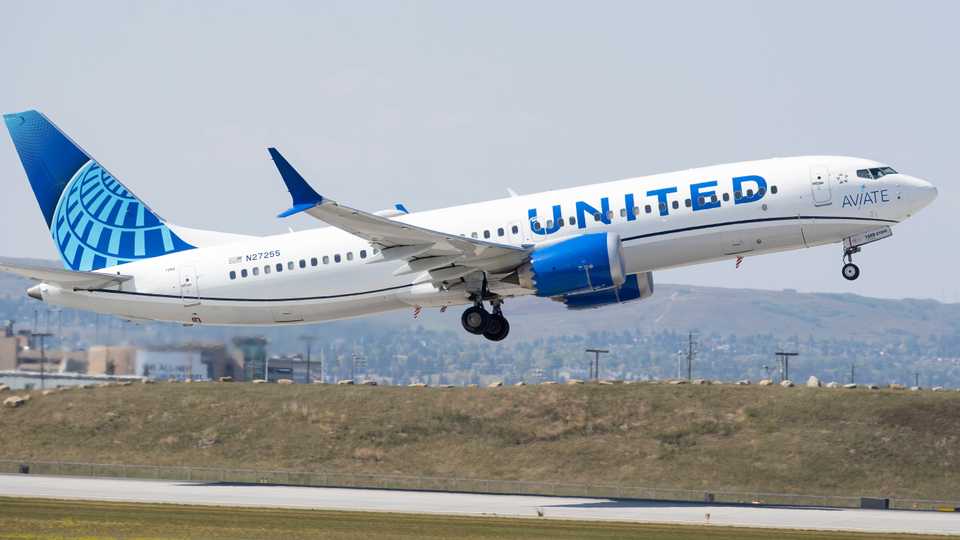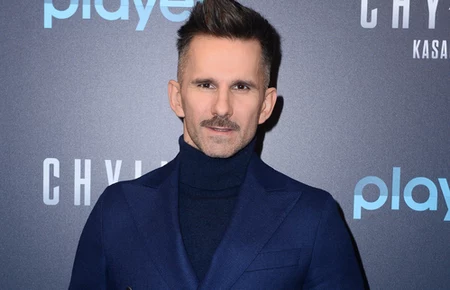United Airlines Slashes Australia Routes: More Cuts on the Horizon
Here is United’s route network to Australia – flying from Los Angeles and San Francisco to Sydney, Melbourne, and Brisbane and from Houston to Sydney.
United’s seasonal second flight between San Francisco and Sydney will only operate for two months, and only three days a week instead of daily. They’ll use a smaller plane for San Francisco to Melbourne, and there will be fewer LA – Melbourne flights leading into peak season. Houston to Sydney will also see fewer frequencies as well.
United gets domestic feed from Virgin Australia, which controls about one-third of Australia’s domestic flying compared to Qantas which controls two-thirds. Traditionally Australia has been a strong market for U.S. flying in winter and weak over the summer but post-Covid, summer flying has been strong as well. However, there’s been too much capacity added – especially to Brisbane which invested hundreds of millions subsidizing new United, American, and Delta services. When those dollars run out we can expect further cuts.
The Chicago-based carrier remains larger to Australia than other rivals, and isn’t eliminating routes, but will fly either smaller planes or fly less frequently on several routes – removing seats from the market, hoping to fill remaining aircraft and at higher fares.
Interestingly they haven’t made reasonable award seats available, certainly in premium cabins, on routes that are performing poorly. Australia is one of the toughest destinations for a premium cabin award.
Here is United’s route network to Australia – flying from Los Angeles and San Francisco to Sydney, Melbourne, and Brisbane and from Houston to Sydney.
United’s seasonal second flight between San Francisco and Sydney will only operate for two months, and only three days a week instead of daily. They’ll use a smaller plane for San Francisco to Melbourne, and there will be fewer LA – Melbourne flights leading into peak season. Houston to Sydney will also see fewer frequencies as well.
United gets domestic feed from Virgin Australia, which controls about one-third of Australia’s domestic flying compared to Qantas which controls two-thirds. Traditionally Australia has been a strong market for U.S. flying in winter and weak over the summer but post-Covid, summer flying has been strong as well. However, there’s been too much capacity added – especially to Brisbane which invested hundreds of millions subsidizing new United, American, and Delta services. When those dollars run out we can expect further cuts.
The Chicago-based carrier remains larger to Australia than other rivals, and isn’t eliminating routes, but will fly either smaller planes or fly less frequently on several routes – removing seats from the market, hoping to fill remaining aircraft and at higher fares.
Interestingly they haven’t made reasonable award seats available, certainly in premium cabins, on routes that are performing poorly. Australia is one of the toughest destinations for a premium cabin award.Here is United’s route network to Australia – flying from Los Angeles and San Francisco to Sydney, Melbourne, and Brisbane and from Houston to Sydney.
United’s seasonal second flight between San Francisco and Sydney will only operate for two months, and only three days a week instead of daily. They’ll use a smaller plane for San Francisco to Melbourne, and there will be fewer LA – Melbourne flights leading into peak season. Houston to Sydney will also see fewer frequencies as well.
United gets domestic feed from Virgin Australia, which controls about one-third of Australia’s domestic flying compared to Qantas which controls two-thirds. Traditionally Australia has been a strong market for U.S. flying in winter and weak over the summer but post-Covid, summer flying has been strong as well. However, there’s been too much capacity added – especially to Brisbane which invested hundreds of millions subsidizing new United, American, and Delta services. When those dollars run out we can expect further cuts.
The Chicago-based carrier remains larger to Australia than other rivals, and isn’t eliminating routes, but will fly either smaller planes or fly less frequently on several routes – removing seats from the market, hoping to fill remaining aircraft and at higher fares.
Interestingly they haven’t made reasonable award seats available, certainly in premium cabins, on routes that are performing poorly. Australia is one of the toughest destinations for a premium cabin award.Here is United’s route network to Australia – flying from Los Angeles and San Francisco to Sydney, Melbourne, and Brisbane and from Houston to Sydney.
United’s seasonal second flight between San Francisco and Sydney will only operate for two months, and only three days a week instead of daily. They’ll use a smaller plane for San Francisco to Melbourne, and there will be fewer LA – Melbourne flights leading into peak season. Houston to Sydney will also see fewer frequencies as well.
United gets domestic feed from Virgin Australia, which controls about one-third of Australia’s domestic flying compared to Qantas which controls two-thirds. Traditionally Australia has been a strong market for U.S. flying in winter and weak over the summer but post-Covid, summer flying has been strong as well. However, there’s been too much capacity added – especially to Brisbane which invested hundreds of millions subsidizing new United, American, and Delta services. When those dollars run out we can expect further cuts.
The Chicago-based carrier remains larger to Australia than other rivals, and isn’t eliminating routes, but will fly either smaller planes or fly less frequently on several routes – removing seats from the market, hoping to fill remaining aircraft and at higher fares.
Interestingly they haven’t made reasonable award seats available, certainly in premium cabins, on routes that are performing poorly. Australia is one of the toughest destinations for a premium cabin award.Here is United’s route network to Australia – flying from Los Angeles and San Francisco to Sydney, Melbourne, and Brisbane and from Houston to Sydney.
United’s seasonal second flight between San Francisco and Sydney will only operate for two months, and only three days a week instead of daily. They’ll use a smaller plane for San Francisco to Melbourne, and there will be fewer LA – Melbourne flights leading into peak season. Houston to Sydney will also see fewer frequencies as well.
United gets domestic feed from Virgin Australia, which controls about one-third of Australia’s domestic flying compared to Qantas which controls two-thirds. Traditionally Australia has been a strong market for U.S. flying in winter and weak over the summer but post-Covid, summer flying has been strong as well. However, there’s been too much capacity added – especially to Brisbane which invested hundreds of millions subsidizing new United, American, and Delta services. When those dollars run out we can expect further cuts.
The Chicago-based carrier remains larger to Australia than other rivals, and isn’t eliminating routes, but will fly either smaller planes or fly less frequently on several routes – removing seats from the market, hoping to fill remaining aircraft and at higher fares.
Interestingly they haven’t made reasonable award seats available, certainly in premium cabins, on routes that are performing poorly. Australia is one of the toughest destinations for a premium cabin award.Here is United’s route network to Australia – flying from Los Angeles and San Francisco to Sydney, Melbourne, and Brisbane and from Houston to Sydney.
United’s seasonal second flight between San Francisco and Sydney will only operate for two months, and only three days a week instead of daily. They’ll use a smaller plane for San Francisco to Melbourne, and there will be fewer LA – Melbourne flights leading into peak season. Houston to Sydney will also see fewer frequencies as well.
United gets domestic feed from Virgin Australia, which controls about one-third of Australia’s domestic flying compared to Qantas which controls two-thirds. Traditionally Australia has been a strong market for U.S. flying in winter and weak over the summer but post-Covid, summer flying has been strong as well. However, there’s been too much capacity added – especially to Brisbane which invested hundreds of millions subsidizing new United, American, and Delta services. When those dollars run out we can expect further cuts.
The Chicago-based carrier remains larger to Australia than other rivals, and isn’t eliminating routes, but will fly either smaller planes or fly less frequently on several routes – removing seats from the market, hoping to fill remaining aircraft and at higher fares.
Interestingly they haven’t made reasonable award seats available, certainly in premium cabins, on routes that are performing poorly. Australia is one of the toughest destinations for a premium cabin award.Here is United’s route network to Australia – flying from Los Angeles and San Francisco to Sydney, Melbourne, and Brisbane and from Houston to Sydney.
United’s seasonal second flight between San Francisco and Sydney will only operate for two months, and only three days a week instead of daily. They’ll use a smaller plane for San Francisco to Melbourne, and there will be fewer LA – Melbourne flights leading into peak season. Houston to Sydney will also see fewer frequencies as well.
United gets domestic feed from Virgin Australia, which controls about one-third of Australia’s domestic flying compared to Qantas which controls two-thirds. Traditionally Australia has been a strong market for U.S. flying in winter and weak over the summer but post-Covid, summer flying has been strong as well. However, there’s been too much capacity added – especially to Brisbane which invested hundreds of millions subsidizing new United, American, and Delta services. When those dollars run out we can expect further cuts.
The Chicago-based carrier remains larger to Australia than other rivals, and isn’t eliminating routes, but will fly either smaller planes or fly less frequently on several routes – removing seats from the market, hoping to fill remaining aircraft and at higher fares.
Interestingly they haven’t made reasonable award seats available, certainly in premium cabins, on routes that are performing poorly. Australia is one of the toughest destinations for a premium cabin award.






